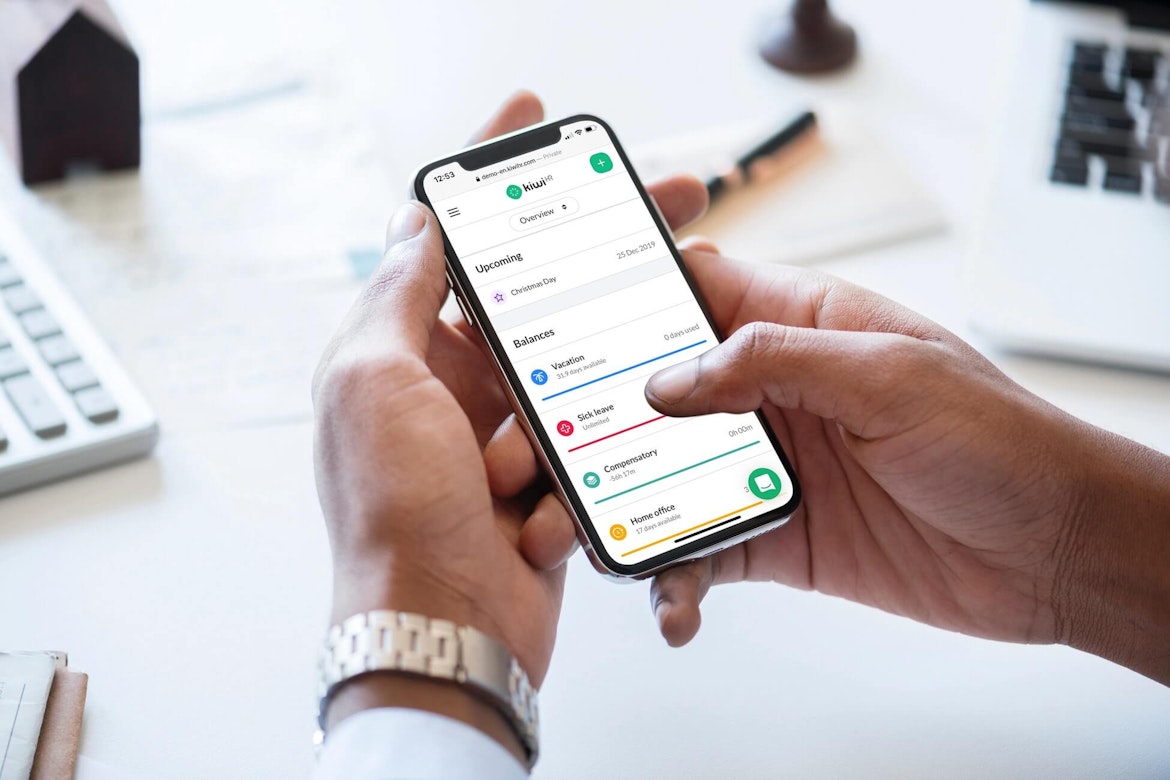- Leave Management
Your guide to annual leave, entitlements and management

If you want a productive, happy, and loyal workforce, you must invest in your employees.
The average worker spends 90,000 hours at work throughout a lifetime, which is why vacation days and benefits are a must.
Plus, UK workers think about quitting their jobs around 16 times per year. A well developed annual leave policy can help alleviate many of those thoughts, especially one that boasts a competitive edge when compared to similar companies.
As a business owner, it's vital to manage those benefits properly. Thus, you can ensure annual leave guidelines are both adhered to and benefited from.
To better understand annual leave guidelines and entitlements for businesses, keep reading!
What is the statutory minimum leave in the UK?
The law states that all employees are entitled to at least 5.6 weeks of paid holiday every year, so if they work five days a week, that means at least 28 days of paid annual leave each year.
This includes:
- agency workers
- workers with irregular hours
- workers on zero-hours contracts
Part-time workers are entitled to 5.6 weeks per year, too. However, because they work fewer days and hours every week, what they're entitled to is calculated based on those hours worked. For example, if an individual works 2 days a week, he/she is entitled to at least 11.2 vacation days per year (2 days per week x 5.6 weeks). Use this tool to calculate the number of days of holiday entitlement.
Employers can choose whether or not they want to include bank holidays in an employee's statutory annual leave. To help you keep track of remaining holiday leave you can consider using an employee vacation planner or staff leave planner.
In addition to leave benefits, Working Time Regulations 1998 dictates that workers cannot be required to work more than 48 hours per week, on average.
What's the average annual leave entitlement granted?
As a business, you only have to offer the minimum requirements for annual leave. However, many companies opt to offer more than the statutory requirement, as this helps retain employees and match job market expectations. Nevertheless, is important to follow the same rules that apply to statutory leave.
The average, including public holidays, is 33.5 days, which is more than a week above annual leave policy requirements.
Public sector and non-profit organisations tend to offer more paid leave than private sector firms. While it may be tempting only to offer the minimum annual leave, you could save significantly in the long run with lower employee turnover and a more productive workforce.

Why you should have an annual leave policy?
If you don't provide annual leave guidelines and policy to your staff, they'll be unclear as to how and when they can use their allotted leave time.
For example, sometimes it just so happens that most employees want to take time off during the busy season. An annual leave policy can help you relay that holiday requests could be refused during that time. Or else, that requests will be accepted on a first-come-first-serve basis.
Employees want to know how their sick leave works, too. Rather than human resources being inundated with questions surrounding holiday benefits, it's more efficient to have a defined annual leave policy. There, employees can find clear answers to any potential questions.
What should an annual leave policy include?
First and foremost, an annual leave policy should reveal when your company holiday year begins and ends. In this section, you can discuss carry over limits, should you choose to allow carry over at your organisation.
Are bank holidays included in your policy? What general public holidays does your company recognise? If you have both full time and part time employees, you must use your annual leave guidelines to explain pro-rata. It will explain how it'll be calculated for all types of workers.
1. State your annual leave entitlement clearly
No matter how excited professionals are to begin new employment, everyone wants to know what their employee benefits are.
Your annual leave entitlement should be stated clearly in your policy. While it's ok to offer the minimum statutory allotment, it's best to remain competitive within industry standards for your business sector. The last thing you want is for employees to be turned off by a minimal policy as they're starting a new path.
Find out how to set clear time off policies with kiwiHR
2. Describe your procedure to request leave
How do you want your employees to request their time off? How much notice do they need to give? With whom do you wish them to make that request? Is there a system you would like them to use to make that request concrete?
The answers to those questions must be detailed in your annual leave policy. If you take requests on a first-come-first-serve basis, make it clear. Likewise, describe what actions an employee should take if they wish to dispute a refusal for any leave request.
You can also use this opportunity to outline consequences for a staff member taking leave without approval.
3. Communicate your policies for employee resignation
Employees are permitted to take what remains of their statutory annual leave during their resignation notice period. As an organisation, you might want to offer payment in lieu of that holiday time.
It's the law that employers have to pay for untaken statutory leave, regardless of under what terms an employee leaves. If your company offers more than the statutory minimum, you can dictate your own arrangements for how to distribute the additional leave.
If an employee has taken more than what they've accrued, the law dictates that you can't take that amount from their salary. Unless, of course, it's written in an employment contract.
That is why it is crucial to keep track of time off records.
4. Explain how sick leave works
Your annual leave policy should include details around sick leave. If employees are sick for 7 days or less, they can self certificate their sickness. After 7 days, they must provide a doctor's note for their stated sickness.
In the UK, workers have every right to get paid for leave. They can continue to build up their holiday entitlements while home being sick or on maternity leave/paternity leave. They can also request a holiday at the same time as their sick leave.
An annual leave policy will encourage happiness and efficiency
With kiwiHR, your human resources needs will be well taken care of. We'll help you manage your annual leave with:
- Tools like accurate time off records and allowances
- Holiday accrual calculation
- Other annual leave guidelines
You'll be able to more effectively define and manage your annual leave policies and the different types of leave you offer.
Are you ready to try simple HR system for all your annual leave policy needs? Start your free trial today. We are here to help!

Enjoy a streamlined absence management
Take a break from tracking employee absence, with error-free, streamlined absence management. kiwiHR's absence management software automatically calculates annual leave entitlements and balances for you.
Welcome to our mailing list! We hope you enjoy our content!


